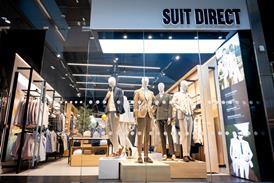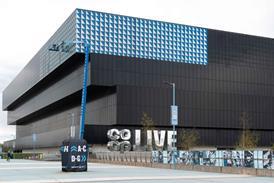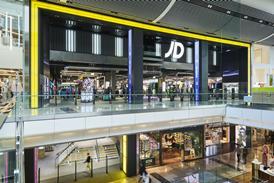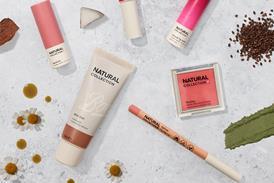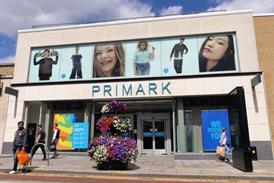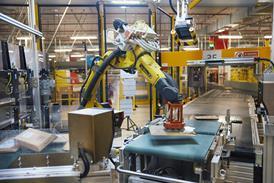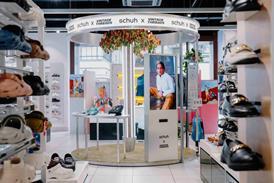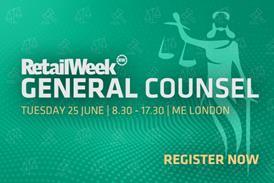-
Home
- Back to parent navigation item
- Home
- JOIN TODAY
- Subscribe now
- News
- Sectors
-
Companies
- Back to parent navigation item
- Companies
- Full A-Z list of retail companies
- ABC
- DEF
- GHI
- JKL
- MNO
- PQR
- STU
- VWX
- YZ
- Abercrombie & Fitch
- Adidas
- Ahold Delhaize
- Aldi
- Alibaba
- Allbeauty
- AllSaints
- Amara
- Amazon
- Ann Summers
- Anthropologie
- AO
- Apple
- Argos
- Asda
- Asos
- B&M
- B&Q
- Bathstore.com
- Beales
- Better Bathrooms
- BHS
- Birchbox
- Blacks
- Blue Inc
- Boden
- The Body Shop
- Boohoo
- Booker
- Booths
- Boots
- Boux Avenue
- BrandAlley
- Bravissimo
- BrightHouse
- Bunnings
- Burberry
- Burton
- Card Factory
- Carpetright
- Carrefour
- Casper
- Cath Kidston
- Charles Tyrwhitt
- Charlotte Tilbury
- Childrensalon
- Claire's
- Clarks
- Clintons
- Coast
- The Co-operative Group
- Crew Clothing
- Currys
- CVS
- Debenhams
- Deliveroo
- DFS
- Dobbies Garden Centres
- Dorothy Perkins
- Dreams
- Dune
- Dunelm
- Eataly
- eBay
- Edinburgh Woollen Mill
- The Entertainer
- Estee Lauder
- Evans Cycles
- Farfetch
- Fat Face
- Feelunique
- Fenwick
- Finery
- Flipkart
- Flying Tiger Copenhagen
- Footasylum
- Fortnum & Mason
- The Fragrance Shop
- Frasers Group
- Furniture Village
- Game
- Gap
- Global Fashion Group
- Glossier
- Go Outdoors
- Green Man Gaming
- Greggs
- Gymshark
- H&M
- Halfords
- Hamleys
- Harrods
- Harvey Nichols
- HMV
- Hobbs
- Hobbycraft
- Holland & Barrett
- Home Bargains
- The Home Depot
- Homebase
- Hotel Chocolat
- Houseology
- House of Fraser
- The Hut Group
- Iceland
- Ikea
- Inditex
- In The Style
- Jack Wills
- Jaeger
- JC Penney
- JD.com
- JD Sports
- Jessops
- Jigsaw
- John Lewis
- Joules
- Jumia
- Just Eat
- Karen Millen
- Kingfisher
- Kroger
- Kurt Geiger
- Lakeland
- Lego
- Levi’s
- Liberty
- Lidl
- LK Bennett
- LloydsPharmacy
- Loaf
- Loblaw
- Lovehoney
- Lowe’s
- Lululemon
- Lush
- LVMH
- Majestic Wine
- Mamas & Papas
- MandM Direct
- Maplin
- Marks & Spencer
- Matalan
- Matchesfashion.com
- Mercadona
- Metro Group
- Mint Velvet
- Missguided
- Miss Selfridge
- Monsoon Accessorize
- Moonpig
- Morleys
- Morrisons
- Moss Bros
- Mothercare
- Mountain Warehouse
- Mulberry
- N Brown
- Naked Wines
- Natura
- New Look
- Next
- Nike
- Nordstrom
- Notonthehighstreet
- Oak Furniture Land
- Oasis Warehouse
- Ocado
- Office
- Office Outlet
- Oliver Bonas
- The Original Factory Shop
- Outdoor and Cycle Concepts
- P&G
- Peacocks
- The Perfume Shop
- Pets at Home
- Pets Pyjamas
- Phase Eight
- Poundland
- Poundworld
- Pret a Manger
- Primark
- Quiz
- QVC
- The Range
- Reiss
- Reliance Retail
- Rent the Runway
- Richer Sounds
- River Island
- Robert Dyas
- Ryman
- Sainsbury's
- Schuh
- Screwfix
- Scs
- Seasalt
- Secret Sales
- Selfridges
- Sephora
- Shoe Zone
- SilkFred
- Simba
- Smyths
- Sofa.com
- Sofology
- Sosandar
- Shein
- Space NK
- Spar
- Sports Direct
- Starbucks
- Store Twenty One
- Studio Retail
- Suning
- Superdrug
- Superdry
- Sweaty Betty
- Tapi Carpets
- Target
- Ted Baker
- Tencent
- Tesco
- TJX
- TK Maxx
- TM Lewin
- Topps Tiles
- Toys R Us
- Trouva
- Unilever
- Uniqlo
- Urban Outfitters
- The Very Group
- Victoria Plum
- Waitrose
- Walgreens Boots Alliance
- Walmart
- Waterstones
- Whistles
- The White Company
- White Stuff
- WHSmith
- Wickes
- WiggleCRC
- Wilko
- WoolOvers
- Woolworths SA
- The Works
- Yoox Net-a-Porter
- Yours Clothing
- Zalando
- Zara
- People
- Intelligence
- Events
- About us
- Subscribe now
- Retail Navigator
Long read: Sustainable retail – the businesses making a difference
By Robyn Wilson2019-10-21T06:12:00

Ask any retailer what the main issues are facing their business today and you’ll be hard-pressed to find one who doesn’t mention sustainability. But who is doing good things here and how are they getting results?
Over the last two years, sustainability has risen up the boardroom agenda, with an increasing number of businesses setting targets to reduce their impact on the environment.
As co-founder of business-focused environmental campaign group A Plastic Planet, Sian Sutherland, puts it: “It’s gone from being the sustainability director who no one really wanted in the room, to the person who is absolutely front and centre.”
Perhaps most visible is the sector’s war on plastic. A move in the UK that was spurred by David Attenborough’s 2017 Blue Planet II BBC series, which – after showing how plastic pollution was devasting the world’s marine environment – ignited a major public debate.
Already have an account? Sign in here


